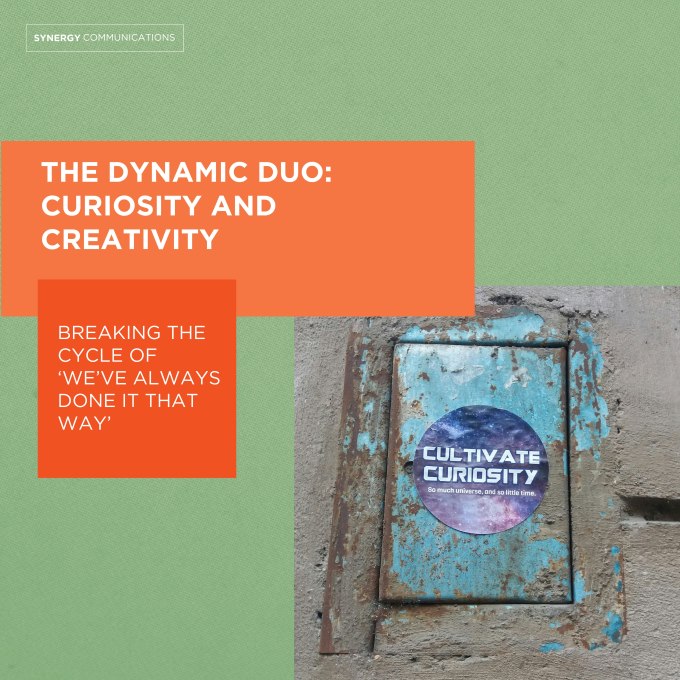As communicators we would all remember a time where we’ve been brought in by the business to help with the latest iteration of a legacy issue with the expectation we address it ‘the way we’ve always done it’.
Whether that’s dusting off template correspondence for customers/stakeholders and changing the date or filming the same style video of an executive leader saying the same message for staff.
Repeating past actions for the same problems can have its merits – if they work. But in a constantly changing business environment, legacy problems often persist because we approach them the same way we always have.
The real key to unlocking these stubborn challenges, I believe, lies in two often-overlooked, but innate human qualities: curiosity and creativity.
When combined this dynamic duo can revolutionise problem-solving in any business and lead to spectacular results.
Curiosity fuels exploration of causes and alternatives. It starts with having a ‘why?’ mindset
- “Why is this problem still here?”
- “Why have we always addressed it this way”
- “What haven’t we tried yet?” “And why haven’t we?”
Curious leaders and teams challenge long-held assumptions, scratch the surface and dig deeper to uncover insights others might miss. Being curious drives us to listen to customers more closely, look at data from a different angle and embrace new and evolving technologies.
Creativity allows us to think beyond conventional boundaries and ‘outside the box’. Instead of repeating what worked (or what we thought worked) in the past, creative thinking encourages us to ask, “What if?” or “How else could this work?”
Creative approaches inspire fresh solutions—whether it’s reimagining customer engagement, optimizing workflows, or finding unexpected partnerships. And it’s a lot more fun and engaging to work in this way.
When creativity and curiosity work together, they break the cycle of “we’ve always done it this way.” Communication teams are best placed to bring these qualities deeper into their business as they are ‘the window in and window out’ for an organisation and often have their radar tuned into external opportunities and threats.
So, the next time a recurring issue surfaces in your business, start with asking why and get creative.
You’ll be amazed at how quickly old problems give way to bold, new solutions that deliver dividends far greater than expected.
Photo by Marija Zaric on Unsplash


